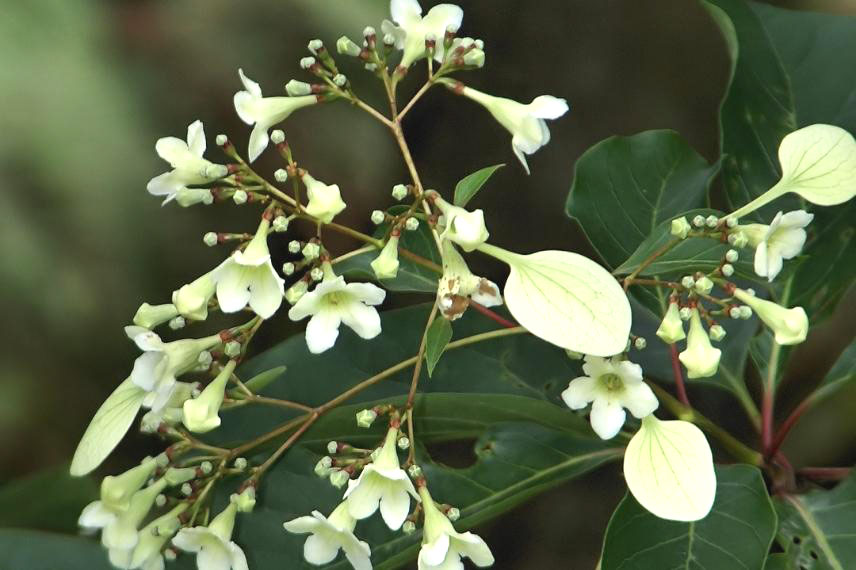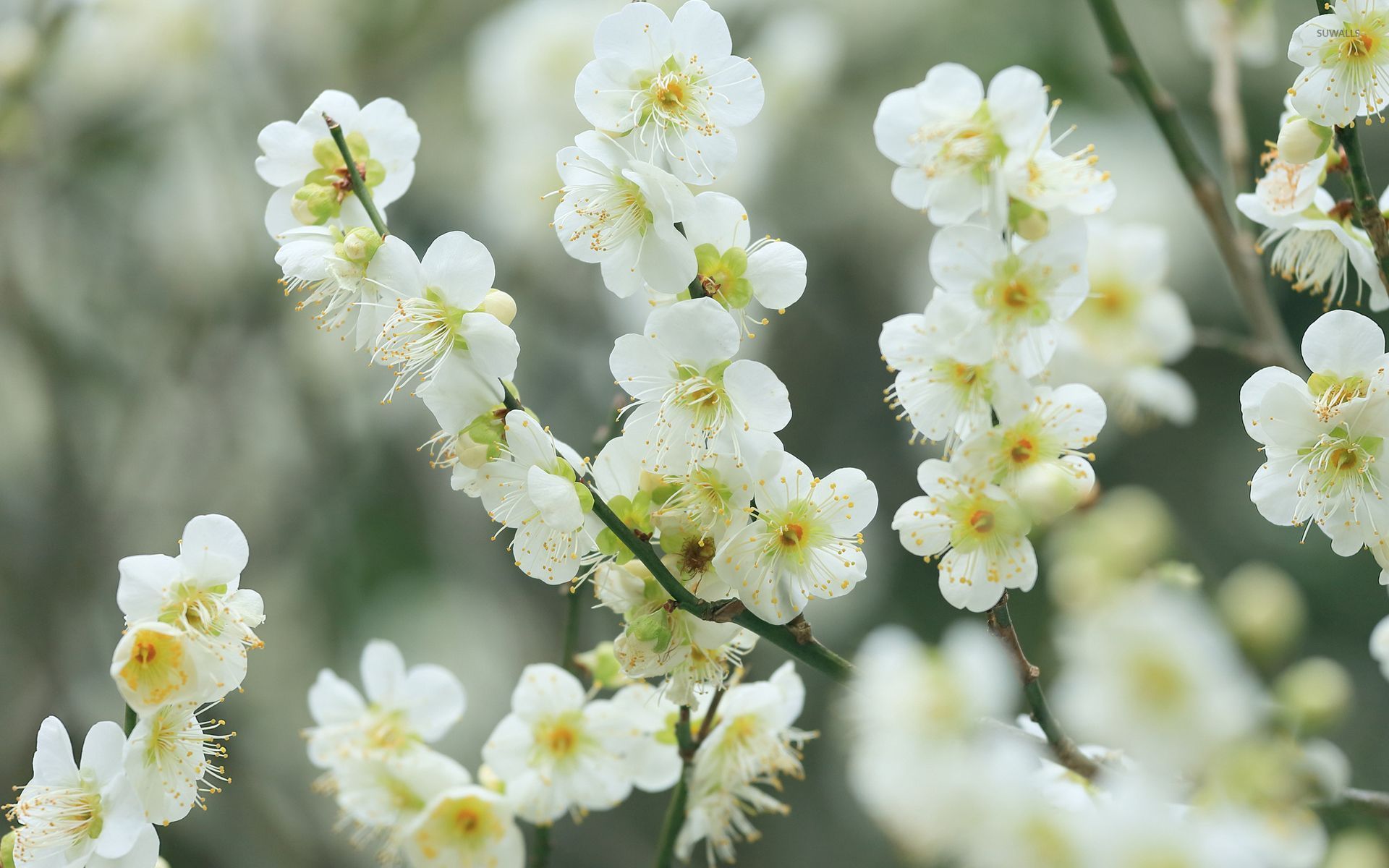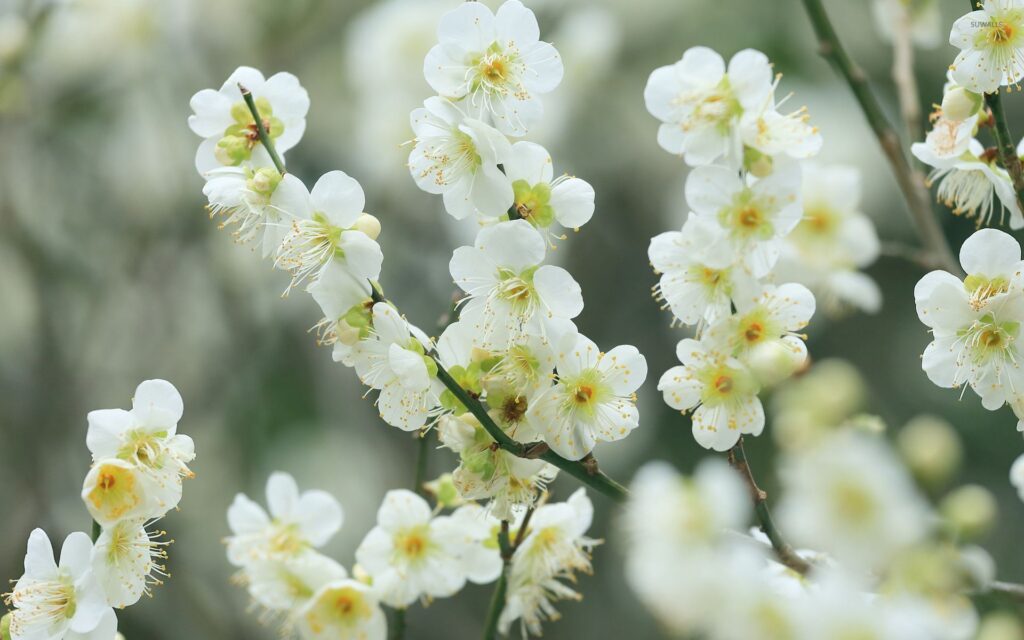
White brings serenity and elegance to the garden. When the trees are adorned with immaculate flowers , the entire surrounding space benefits from the calm and the light released. Whether they are majestic and large trees or small subjects adapted to tight spaces, whether they are adorned with large ornamental flowers or a multitude of small flowers like so many snowflakes, discover our favorite white flowering trees.
THE DAVIDIA INVOLUCRATA OR HANDKERCHIEF TREE
The common name of this deciduous tree: handkerchief tree perfectly evokes the shape of its flowers, surrounded by large, very original hanging bracts. This abundant white bloom blooms from early May to late June , giving it undeniable appeal. Its antlers grow quickly as they spread , reaching up to 12 m and reaching a wingspan of 10 m. The large leaves (8 to 16 cm) of the Davidia are heart-shaped and a pretty bright light green.
The Davidia involucrata prefers rich and fertile, cool but drained soils, and appreciates exposure to the sun. Very hardy, it will easily withstand winter temperatures down to -15°C, or even higher.
Its defect may be to put a strain on the patience of gardeners because its magnificent white flowers only appear after 15 to 20 years. In this case, prefer the Davidia involucrata ‘Sonoma’ variety , a rare form of the handkerchief tree, capable of flowering in the first years.
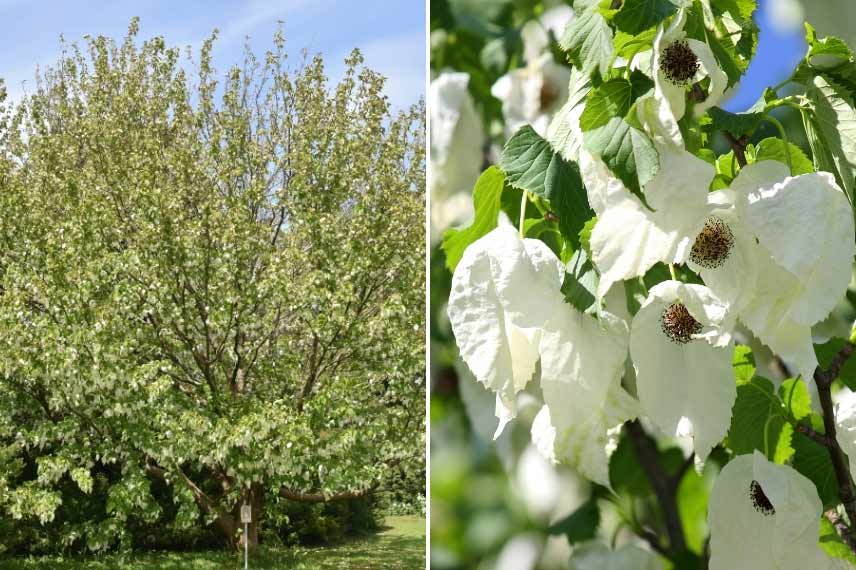
MAGNOLIA DENUDATA ‘DOUBLE DIAMOND’ OR MAGNOLIA YULAN
This variety of magnolia ensures a grandiose spectacle in the spring with its countless pure white starry flowers . Perfectly hardy, the Magnolia denudata ‘Double Diamond’ , or Magnolia Yulan, comes from China where its ornamental qualities have been recognized for centuries. Its admirable delicately scented white flowersprecede the appearance of large deep green oval leaves. It is a small deciduous tree with a rounded habit, reaching 8 to 10 m in height for a spread of 5 m, perfect for tight spaces, where it will be the focal point in rich, cool and slightly acidic soil. Protect it from prevailing winds and place it in the sun or in partial shade to see it fully blossom. A mulch at the base will help keep it cool.
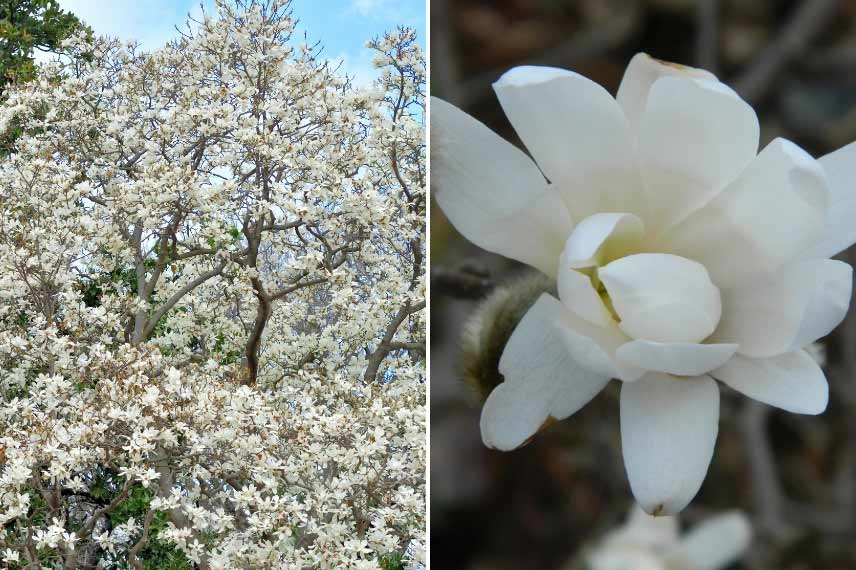
ROBINIA PSEUDOACACIA OR FALSE-ACACIA
Elegance and finesse, here is how to define Robinia pseudoacacia or False-acacia . This deciduous tree of about fifteen meters at maturity offers us a flowering of honey in long, pure white hanging clusters , spreading a marvelous scent of orange tree. At first light green in color, its delicate, airy leaves turn golden yellow in autumn.
This False-acacia grows quite quickly to reach a height of 15 m and a spread of 8 m. It is hardy above – 15°C and will prefer light and well-drained soil, even poor, preferably cool, to settle in properly, even if it tolerates summer drought well once it is well established and rooted. It likes the sun and especially sheltered from the prevailing winds and spray: its brittle branches and its flowering are sure to suffer.

PRUNUS SERRULATA ‘SHIROFUGEN’ OR FLOWERING CHERRY
Awarded the prestigious Award of Garden Merit for its qualities, this flowering cherry cultivar Prunus serrulata ‘Shirofugen’ actually has more than one asset! First of all, its magnificent flowering which covers it entirely on the arrival of fine weather: snowy, pure white slightly rosy, double and fragrant , it comes in a profusion of small pompoms grouped together in bouquets. The deciduous young leaves of bronze color prolong the show of flowering before turning deep green and taking on flamboyant hues in autumn.
Its pretty flared silhouette is also remarkable , forming an adorable little tree 8 m high and 6 m wide with spreading branches. Even if your garden is small, you can find a place for it, preferably in fairly rich, cool but well-drained soil with a neutral pH. It is hardy above – 15°C.
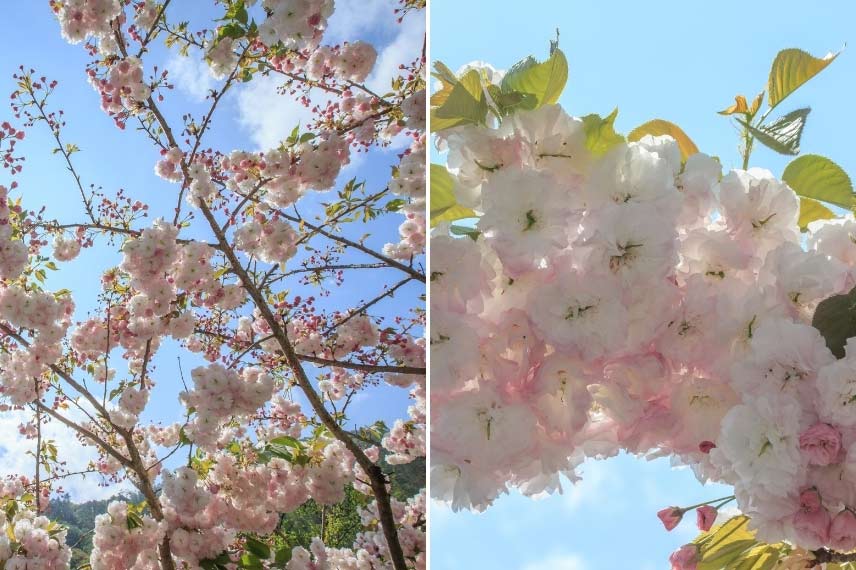
THE PTEROSTYRAX HISPIDA OR TREE WITH SHOULDER PADS
Blooming from June to July, the Pterostyrax hispida or Epaulette tree seduces us with its charming white flowers grouped in hanging clusters of 10 to 25 cm, followed by decorative fruits all winter long. It is a small hardy Japanese tree, rare in gardens and yet easy to grow, to plant in any rather cool soil, even limestone and in a sunny position. Not exceeding 6 to 10 m in height, it is a small subject which will easily take place in a small space where its dense crown, with branches covered with oval deciduous leaves of a beautiful bright green will make it a focal point all at once. made graceful.
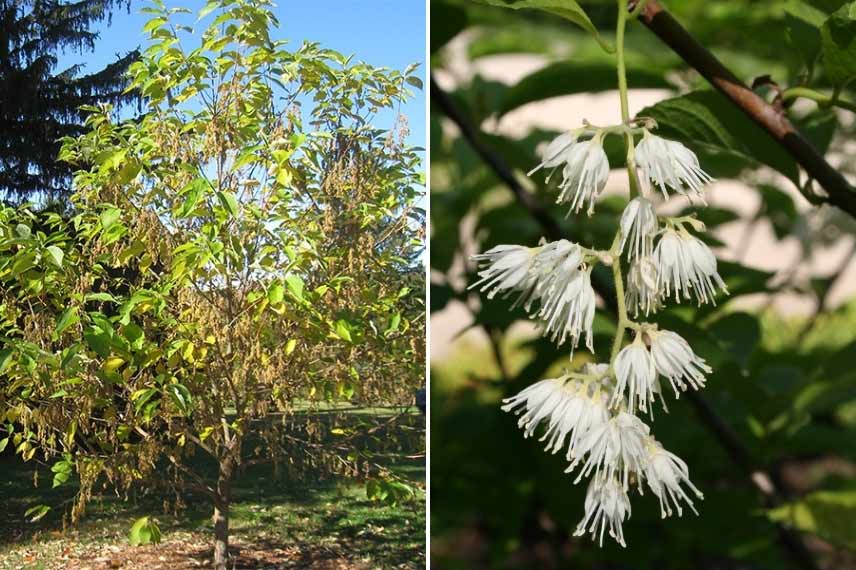
AESCULUS HIPPOCASTANUM OR COMMON HORSE CHESTNUT
Also called White Chestnut or Horse Chestnut, the Aesculus hippocastanum is a well-known tree in our region. It is a tree with great development ( height 20 m and wingspan 15 m), deciduous, to be reserved for spacious gardens. Its flowering takes place in the spring : large pinkish-white conical clusters entirely adorn the foliage of this majestic tree, making it particularly ornamental. Then this flowering will be followed by the typical fruiting of chestnut trees. The large, bright green webbed leaves take on a beautiful golden yellow hue in autumn.
Very rustic and undemanding , the chestnut tree adapts to all soils, provided they are deep, as well as to all climates. It is hardy above – 15°C and avoid planting it in dense shade.
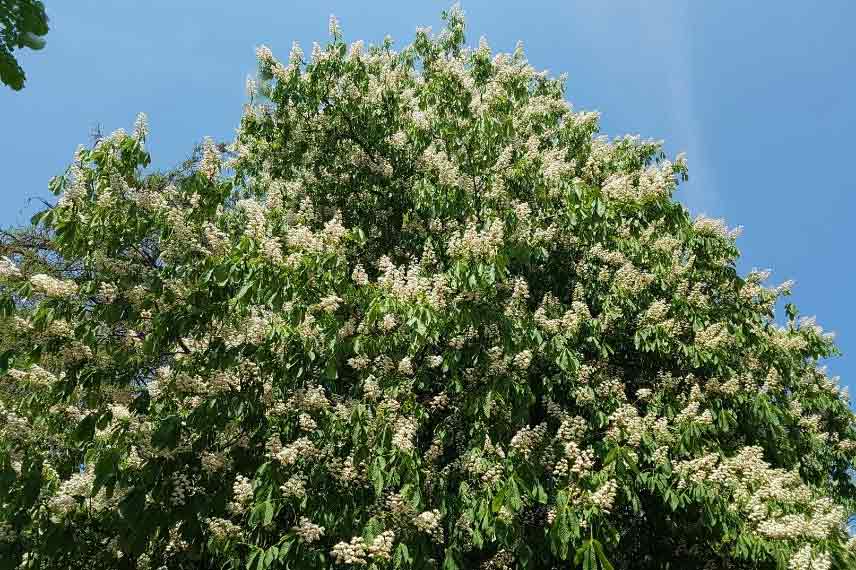
EMMENOPTERYS HENRYI: A RARITY
A protected species native to southern China, the Emmenopterys henryi can, in its native area, reach 45 m in height and live for several centuries. Its rare flowering , on an equally rare subject, is superb but random and delights enthusiasts. It is composed of intensely fragrant creamy-white tubular flowers , appearing on the upper branches from June to August. This magnificent tree with a flared habit has attractive dark, shiny foliage, the young shoots of which are bronze red, as well as gray and cracked bark.
Emmenopterys henryi should be planted in deep, rich, moist, well-drained soil, in a sunny or semi-shady position, away from cold or dry winds. Quite rustic, it can withstand temperatures down to -15 ° C.
